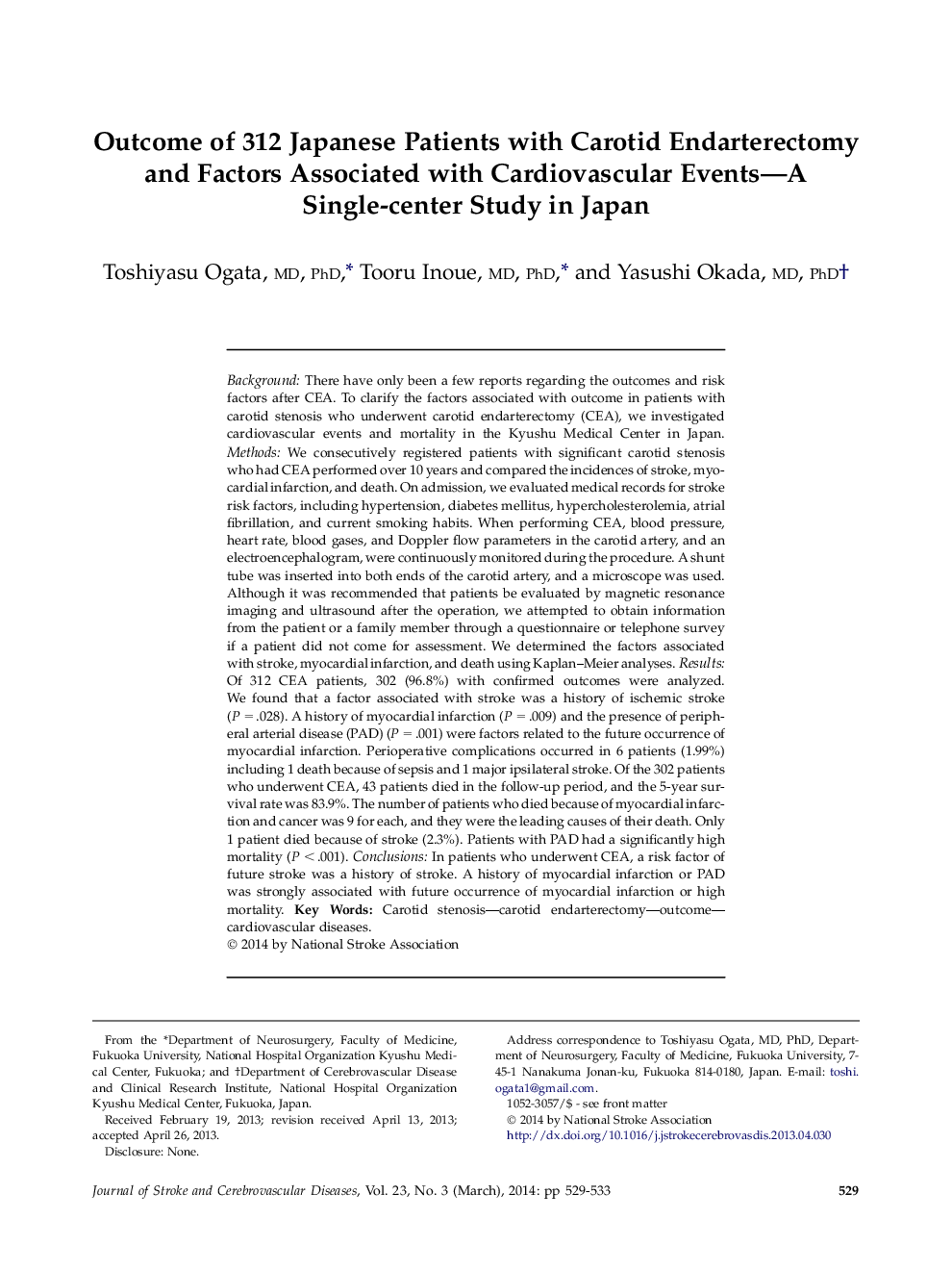| کد مقاله | کد نشریه | سال انتشار | مقاله انگلیسی | نسخه تمام متن |
|---|---|---|---|---|
| 2704169 | 1144672 | 2014 | 5 صفحه PDF | دانلود رایگان |
BackgroundThere have only been a few reports regarding the outcomes and risk factors after CEA. To clarify the factors associated with outcome in patients with carotid stenosis who underwent carotid endarterectomy (CEA), we investigated cardiovascular events and mortality in the Kyushu Medical Center in Japan.MethodsWe consecutively registered patients with significant carotid stenosis who had CEA performed over 10 years and compared the incidences of stroke, myocardial infarction, and death. On admission, we evaluated medical records for stroke risk factors, including hypertension, diabetes mellitus, hypercholesterolemia, atrial fibrillation, and current smoking habits. When performing CEA, blood pressure, heart rate, blood gases, and Doppler flow parameters in the carotid artery, and an electroencephalogram, were continuously monitored during the procedure. A shunt tube was inserted into both ends of the carotid artery, and a microscope was used. Although it was recommended that patients be evaluated by magnetic resonance imaging and ultrasound after the operation, we attempted to obtain information from the patient or a family member through a questionnaire or telephone survey if a patient did not come for assessment. We determined the factors associated with stroke, myocardial infarction, and death using Kaplan–Meier analyses.ResultsOf 312 CEA patients, 302 (96.8%) with confirmed outcomes were analyzed. We found that a factor associated with stroke was a history of ischemic stroke (P = .028). A history of myocardial infarction (P = .009) and the presence of peripheral arterial disease (PAD) (P = .001) were factors related to the future occurrence of myocardial infarction. Perioperative complications occurred in 6 patients (1.99%) including 1 death because of sepsis and 1 major ipsilateral stroke. Of the 302 patients who underwent CEA, 43 patients died in the follow-up period, and the 5-year survival rate was 83.9%. The number of patients who died because of myocardial infarction and cancer was 9 for each, and they were the leading causes of their death. Only 1 patient died because of stroke (2.3%). Patients with PAD had a significantly high mortality (P < .001).ConclusionsIn patients who underwent CEA, a risk factor of future stroke was a history of stroke. A history of myocardial infarction or PAD was strongly associated with future occurrence of myocardial infarction or high mortality.
Journal: Journal of Stroke and Cerebrovascular Diseases - Volume 23, Issue 3, March 2014, Pages 529–533
